In Residence
2017/2018
The Compañía Nacional de Danza launched its Fourth call for contenders in its Creation Residency initiative
This initiative aims to facilitate emerging choreographers a space in which to work and experiment while promoting their creations through the communication platforms put at their disposition.
Coreógrafos invitados
-
Manuela Barrero
DLCAOS
‘ Z È B R E ‘
Proyecto Residente Compañía Nacional de Danza 2018
Dirección / coreografía: Manuela Barrero
Intérpretes: Manuela Barrero / Davicarome
Fotografía: Jacobo MedranoMANUELA BARRERO DLCAOS
Licenciada en Hª del Arte (U.C.M) especialista en Arte Contemporáneo, Manuela Barrero estudia danza clásica (Real Conservatorio,Escuela Profesional de Danza de Madrid) siguiendo su formación en Berlin y Paris.
Tras trabajar desde 2007 hasta la actualidad en la compañía LOSDEDAE en el equipo artístico, como intérprete y asistente de dirección, comienza su trayectoria como creadora independiente. Así dirige la compañía dlcAos, un proyecto en el que el encuentro de las artes plásticas, audiovisuales, literatura, danza, pensamiento, caracteriza cada creación. Con dlcAos le gustaría defender la verdad de una danza resucitada y fuerte, creada en un espacio digno que la dignifique y la haga hermosa para el espectador, no sólo en escena,sino hermosa desde su génesis.QUÉ ES ‘ Z È B R E’
‘ Z È B R E ‘ es el término coloquial francés para ‘bicho raro’. También se asocia, de una manera cariñosa e irónica, con las personas dotadas de una alta capacidad emocional, sensitiva. Yo lo asocio, además, a la incomprensión social que ésto, sorprendentemente, genera. Incomunicación emocional e intelectual que provoca en la zebra un estado de MELANCOLÍA permanente. ‘ z è b r e ‘ está inspirado en genios de la historia del arte universal, cuyas biografías y obras, son para mí síntomas externos de la ‘patología’ que parece que es ‘ser diferente’. Leonardo, Borromini, Anivale Carraci…. Son los antepasados de nuestra zèbra contemporánea, y la propuesta es expresarlo y comunicarlo por medio del lenguaje de la danza. El proyecto es una necesidad profunda de llamada a la inspiración escurridiza. ‘ z è b r e ‘ es soledad común, es reivindicar lo diferente como la esencia desencadenante del acercamiento entre seres humanos diversos, en una cultura que impone la homogeneidad del no criterio. Es provocar un abrazo a lo desconocido. Es una reflexión sobre el concepto de ANAMORFOSIS (proyección de la forma fuera de sí misma) aplicado a la danza.
Utilizando estos efectos en la propia fisicidad de los bailarines, querría expresar la fuerza deformadora de la mirada melancólica, su inestabilidad, e incluso inexactitud, en muchas ocasiones. -
Martín Chaix
CND PROJECT: ALIVE
Music In Vivo for String Quartett, II, from Raphaël Cendo – Serenade No. 10 in B flat major KV 361 “Gran Partita” from W.A. Mozart Length ca.
10 minutes
Dancers: 2 women and 2 men.
Cast to be decided later.Eventual collaborators to be included later
SYNOPSIS: Contrasting Mozart’s delicate Serenade No. 10 in B flat major KV 361 with the rough and tense In Vivo from the French composer Raphaël Cendo I wish to explore different aspects of body’s relation between 4 individuals. In this creation process I will also pursue some researches on pointe work and its range of possibilities.
BIOGRAPHY
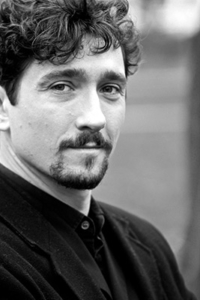
Martin Chaix was born in 1980 in Albi (France), where he began his classical ballet training in 1986.
In 1993 he was accepted at the École de Danse de l’Opéra National de Paris where he studied until 1999 and directly joined the Paris Opera Ballet (dir. Brigitte Lefèvre).
In 2006 he was offered a soloist position at the Leipzig Ballet (dir. Paul Chalmer) experiencing a whole new repertoire and taking part in new creations. Finally,
in 2009 he became a member of the Ballett am Rhein Düsseldorf Duisburg (dir. Martin Schläpfer).
His repertoire as a dancer included choreographies from Rudolf Nureyev, Pina Bausch, Marco Goecke, Uwe Scholz, Édouard Lock, Mats Ek, Hans van Manen, Jiří Kylián and Martin Schläpfer among others.
Since 2015 he is working as a freelance choreographer.
Martin Chaix began choreographing in 2006 for the “Danseurs Chorégraphes” evening at the Paris Opera Ballet and pursued later on with different independent projects and “Young Choreographers” evenings, most notably for the renowned Noverre-Geselschaft evening with the Stuttgart Ballet.
Very soon he received numerous invitation to work with different companies such as the Leipzig Ballet, the Saarland State Theatre Ballet, the Croatian national Ballet in Split and the Ballet am Rhein Düsseldorf Duisburg among others.
Along with different choreographic projects he is also doing some short films and photographies. One of his work has been selected for the One Minute Film Festival in Amsterdam in 2013. -
Carla Diego
PLANGĔRE
Coreografía y Dirección: Carla Diego Luque
Intérpretes: Claudia Boch Fernández, Maddi Ruiz de Loizaga Goikoetxea y Carla Diego.
Fotografías y Vídeos: Teaser – Marta Diego L
Fotografías – Elías Aguirre
Vestuario: Gemma Espinosa.
Contacto: Carla Diego Luque +34 607 63 24 63 Carla.Diegolu@Gmail.Com
Estreno Formato Corto: Cuerporomo 2017Este proyecto nace de un interés en la investigación del cuerpo y del movimiento así como de su expresión conjunta. Desarrollado principalmente a partir del estudio de diferentes imágenes y de una investigación teórica, busca hacer a través de la danza y su manifestación física un discurso dramático y poético del ritual del duelo centrándose en la figura de las plañideras.
Partiendo de distintas referencias “p l a n g ĕ r e” inicia un proceso de búsqueda para definir una fisicalidad, expresividad y estética marcada por este ritual del duelo dejando que la danza ejerza un poder transformador para que el cuerpo y la mente viajen a través de ella y hacer visible y física la manifestación de la pena.
“Atended, llamad a las plañideras, que vengan; buscad a las más hábiles en su oficio; que se apresuren, que vengan y hagan sobre vosotros sus lamentaciones; caiga de vuestros ojos el llanto y manen lágrimas vuestros párpados”
“La comedia salvaje”, José Ovejero. -
Le Doute
THE LONGEST NIGHT
Synopsis: La noche más larga surge como un vómito meditado pues necesitábamos investigar la interacción de nuestros cuerpos en movimientode una manera dramática e inevitablemente urgió el conflicto. Un conflicto físico, agresivo y sin embargo ahogado de fragilidad.

ARTISTIC AND TECHNICAL SHEET:
Intérpretes: Carlos Beluga y Elisa Forcano
Creación original: Carlos Beluga y Elisa Forcano
Música: Serch Geval
Iluminación: José Ramírez
Fotografía: Álvaro Serrano Sierra
Vídeo: Álvaro Serrano Sierra
Producción: Le Doute
Dirección Artística:
Carlos Beluga y Elisa Forcano -
Carmen Fumero
UN POCO DE NADIE
Coreografía: Miguel Ballabriga, Carmen Fumero con la colaboración de Indalecio Seura.
Intérpretes: Indalecio Seura, Miguel Ballabriga y Carmen Fumero
Música: Iván Cebrián
Sinopsis: Un poco de nadie cuenta la historia de alguno de nosotros. Habla de intentarlo y no lograrlo. De lo anónimo y de no ser nadie, porque un alguien era una vez un don nadie que quiso y lo hizo.
DOSSIER ESPECTÁCULO
Un poco de nadie es una propuesta que nació con la motivación de darle importancia al hecho de no ser nadie.
Se trata de un punto de encuentro entre tres personajes anónimos, un paréntesis en el camino de cualquiera de nosotros, donde la búsqueda de una identidad propia y el encuentro con el fracaso, son los protagonistas.
-
Cía. Marcos Y Marco
THE PARK
La Compañía Marcos Y Marco es un ensemble de artistas que encuentra en la danza contemporánea una de sus múltiples maneras de expresión. Fue formada en 2010 y con base en Marsella (Francia). Su director y coreógrafo es el artista Marcos Marco (Santander), sus coreografías han participado en numerosos festivales y escenarios internacionales como Francia, España, Alemania, Italia, China, Marruecos, Australia, Suiza, Brasil. En la actualidad su investigación artística está vertebrada por varios elementos fundamentales: el riesgo, la naturalidad, el humor, la poesía, y el absurdo.
En los detalles toma su mayor inspiración, utilizando éstos como denominador común en sus obras, siendo a menudo su nexo. El movimiento natural es la materia prima de la composición, se encuentra en ese movimiento sin artificio y honesto el lenguaje característico del artista.La Compañía Marcos Y Marco presenta su nuevo proyecto: El Parque
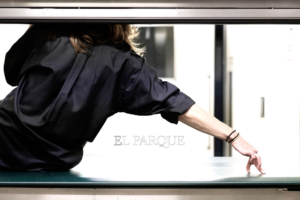
Los parques son lugares donde se entrecruzan ideas, se intercambian las situaciones, donde las miradas pesan y la critica a lo desconocido se torna absurda, sitios donde el azar recrea e inventa el mundo.
En este proyecto pretendemos exponer EL PARQUE como un espacio de encuentro donde poder indagar en los comportamientos de sus adeptos mediante un viaje a la memoria.
Encontrar un refugio en el anonimato, escapar de la monotonía, reducir las costumbres de los paseantes a simple divertimento efímero, buscar conexiones en el silencio para encontrar un lenguaje común donde los intérpretes se desplazan entre emociones y energías de ensemble. Una búsqueda de grupo donde encontrar un mensaje propio, singular y definido.
-
Cristian Martín
SER
SYNOPSIS: I imagine a body subject to doubt and indecision, which coexists with the haste of those who want to arrive and with the calmness of those who know how to wait. A nonconformist, brave man, who faces fears, hits, finds and is also wrong. Free in the search for limits in his own dance, without ties, full of nuances, styles and forms. Being imaginary, being that celebrates life through dance.
(next translation)
ARTISTIC SHEET:
Idea original, coreografía e interpretación: Cristian Martín
Dirección artística y orientación coreográfica: Daniel Doña
Diseño de Iluminación: Álvaro Estrada
Música Original: Pablo Martin Jones
Músicas preexistentes:
Sonada De Adios ( Hommage a Paul Dukas)/ Joaquín Rodrigo
El Chuli y el Dr. Kelly / Tino di Geraldo
The Here and After/ Jun Miyake y Lisa Papineau
Árbakkinn/ Ólafur Arnalds y Einar Georg Einarsson
Fandangos de Atapuerca/ Fetén Fetén
Study for Player Piano(II) / Ólafur Arnalds
Vídeo y fotografía: Beatrix Molnar
Realización de vestuario: Gabriel Besa
Diseño de escenografía: Daniel Doña -
Alejandro Molinero
ADM
Un equipo Joven, pero con gran trayectoria por separado, se une en esta ocasión para conformar la partitura de este espectáculo. No obstante, son varias las críticas tanto de público como de prensa, las que avalan el buen resultado del trabajo de esta joven pero talentosa compañía.
Dirigida por Alejandro Molinero, ex bailarín del Ballet Nacional de España, Molinero en Compañía en su corta pero intensa trayectoria ha pisado ya los escenarios de teatros tan ilustres como el Campoamor de Oviedo y participado en festivales tan importantes como el de Jerez o el Festival Flamenco Madrid.Alejandro Molinero & la CND. Proyecto ADM
-
Muriel Romero
STOCOS INSTITUTE
The Marriage of Heaven and Hell is a choreographic work based on the novel of the same name by William Blake that combines dance, electroacoustic composition, interactive technology and cognitive science in a scenic format.
Description
The central core of Blake is the restoration of the union of apparently irreconcilable opposite pairs, because, as the poet said “without opposites there is no progress”. On the one hand, there is the virtuous clarity of techno-scientific rational thinking (heaven, logos) and on the other, the perverse and overwhelming creative forces of imagination and instinct, which emerge from body energy (hell, mythos).
“Blake’s original work defies genres by organically combining a great variety of elements: from illustrations, poems, parodies, an original mythology, a political anthem or religious manifests, to an entire theory of perception and several descents into the underworld. In our scenic vision, these elements emerge from the body of the dancers in the form of audible entities and visual imagery developed using high technology: models of artificial intelligence and sound synthesis connected in real time to the movements of the dancers.
The coupling between the bodies on the stage and the interactive digital technology extends the body energy of the dance to other sensory modalities such as acoustics and visual imagery. The proposed work is bridging a gap between abstract techno-scientific thinking and the concrete experience of the body”, the Stocos Institute explains.
The work analyses expressive aspects of body movement, such as energy, fluidity, symmetry or impulsivity, translating them (in real time) into audible and visual digital abstractions. The Stocos Institute transforms the scenic space into a reactive environment which springs from the body activity of the dancers. It explores the limits of choreographic imagination and creates an augmented reality of dance.
This project uses technology designed for the development of dance in the European Project WhoLoDancE, part of the Information and Communication Technologies (ICT) programme under Horizon 2020 (H2020), of which the Stocos Institute is a beneficiary partner.
ABOUT INSTITUTO STOCOS
Artificial intelligence, biology, mathematics, and experimental psychology can be danced. The expansion of the body energy of dance to other sensory modalities, thanks to technology, is the field of research of choreographer and dancer Muriel Romero and composer Pablo Palacio. Romero, who began her career with choreographers such as Forsythe or Jiří Kylián, teamed up with Pablo Palacio to found the Stocos Institute, from whence they analyse and develop the interaction between gestures, sounds, and visual imagery. They use technology to develop dance. They investigate three-dimensional movement on a stage on which bodies interact with audible and visual entities. Fruit of its own imagination, the Stocos Institute has produced a series of scenic works that act as an artistic dissemination of their research. Their work, for example Acusmatrix, Catexis, Stocos, Double Bind, Neural Narratives1: Phantom Limb, Neural Narratives2: Polytopya or Piano & Dancer speak in this new language that they have invented.
The theoretical body that Muriel Romero and Pablo Palacio generate is studied in conservatories and universities all over the world. They have participated in pioneering European research projects such as WhoLoDancE, Metabody, and D.A.N.C.E. They have also been collaborating since 2010 in the development of Motion Composer, a technology oriented toward the interaction between body and sound for people with disabilities.
CREDITS
Direction: Pablo Palacio and Muriel Romero
Coreography: Muriel Romero
Music: Pablo Palacio
Starring: Fabrice Edelmann, Clyde Emmanuel Archer, Katerina Humenyuk, Arnau Pérez, Lucía Estévez Almenzar, Gabriella de Alteriis, Teresa Garzón and Aina Canela
Interactive visual simulation: Daniel Bisig
Software and technology: Daniel Bisig, Pablo Palacio and Infomus Casa Paganini
Light: Juan Carlos Gallardo
Costumes: Stocos Institute
Production: Pablo Palacio
Coproduction: Naves Matadero – Centro Internacional de Artes Vivas, Teatro Museo Universidad de Navarra
With the support of: Comunidad de Madrid, EU ICT H2020, Compañía Nacional de Danza, Teatros del Canal, Hebel Halle (Heidelberg, Alemania), Infomus-Casa Paganini- University de Genova (Génova, Italia) and Institute for Computer Music and Sound Technology of Zurich -
William Sánchez
WANDERLUST
WANDERLUST is the third part of the trilogy KALA (Sanskrit for “time”), with which the inclusive dance company SZENE 2WEI concludes its cycle of contemporary dance pieces on various aspects of the term “time”. The names of the first two pieces are TARUN (Sanskrit for “timeless”) and #ATME.
WANDERLUST presents the encounter of the human body with nature as a possibility: starting from a present, with which fast-pace, artificiality and alienation are associated, this encounter opens the way to a promising future.
Future and nature – how do both fit together? The contemporary dance piece WANDERLUST? poses exactly this question. What does the future of nature, the nature of the future look like? The third and last part of the KALA trilogy attempts to bridge between past, present and future. Whether it is global warming, natural disasters or the problematic disposal of nuclear waste – the wish to surpass one’s own limits has led humanity to create monsters that only now become visible and palpable. The elements have lost their balance. But how to deal with this? How to become one again with a nature from which we already seem to have largely alienated ourselves? WANDERLUST? plays with future predictions and produces visions. It asks questions and looks for answers. This piece is an invitation as much as it is an incitement. To face the monsters, develop ideas and first and foremost to never lose one’s wanderlust.
Pedagogic & Artistic director: Timo Gmeiner
Choreographer & Artistic director: William Sánchez H.
Dance: Anne-Hélène Kotoujansky, Eiji Takeda, Fuuko Shimazaki, Jörg Beese, Matthieu Bergmiller, Mukdanin Phongpachith Ricarda Noetzel
Music & Composition: Tim Bücher
Costume, Scenography & Light: Clément Debras
Workshops: Anne-Hélène Kotoujansky, Jörg Beese, Mukdanin Phongpachith
Editorial work: Kristina van Kempen
Video & Photo: Paul Meuth
Graphic Design: Pavlina Boneva
Assistant: Didier Vergel
Stage management: Mercè Mayor
Pictures: Paul Meuth -
Fabián Thomé
Y ö Y
Dirección y coreografía: Fabián Thomé
Música original: Park Woojae
Idea original: Fabián Thomé % Ignacio Urrutia
Danza: Pau Aran, Carlos Fernández, Fabián Thomé
Dramaturgia, Fotografía, Vídeo: Ignacio Urrutia
Vestuario: Germán Cabrera
Luces: Víctor Colmenero
Producción: Alexei Issacovitch
Duración: 20 min.
Estreno absoluto el 15 de noviembre de 2018, en el Teatro De Warande, en Turnhout (Bélgica).Tres criaturas interrelacionadas entre sí habitan un espacio común donde la vibración y el sonido transforman el paisaje. Explorando las conexiones con la naturaleza, el misticismo de un árbol interroga al hombre en su propio camino hacia adelante. En idioma amazónico, “YöY” hace referencia al bosque donde tienen lugar lo sueños.
Creación para 3 bailarines y 1 músico, YöY se encuadra en una trilogía con “umbra” y “entre sombras”, en la que Fabián Thomé explora las relaciones contradictorias entre el ser humano y la madre tierra.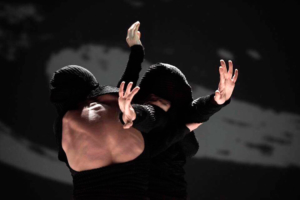
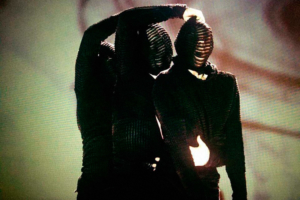
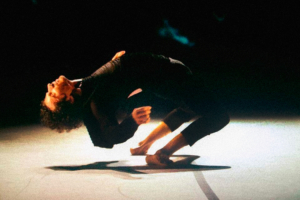
Colaboran: De Warande Theater, Turnhout (Bélgica); Fundición, Bilbao; Compañía Nacional de Danza, Madrid.
FABIÁN THOMÉ DUTEN
CARLOS FERNÁNDEZ
PARK WOOJAE
IGNACIO URRUTIA
PAU ARAN


































